Contents
Market Overview
Macro Review
German bunds return to positive yields. This is at least across tenors that are 10 years and out. In turn, the global supply of negatively yielding debt dipped to $9tn, from a high of $17tn in August. Meanwhile, the broadest question in markets is whether there is a change of regime in USD as most participants are long. The growth-to-value rotation is already underway in developed markets, just as the Nasdaq corrected well over 10% from the November highs. In fact, the Nasdaq has now corrected by over 10% in January alone, with the S&P down almost 6% this year. In contrast, EM equities on an equally-weighted basis are up on average 2.9%, with market-weight indices, such as MSCI EM index up 1.9%. What is more striking, is that January seasonality typically sees DM equities outperform EM equities by 3ppts, but instead in 2022 we see EM outperform DM by almost 10ppts. The second observation comes with the first FOMC of 2022. There are louder calls for an abrupt end to quantitative easing, a stronger case to bring forward quantitative tightening and increasing odds of a March hike beyond 25bp. The mantra is still inflation-focused, not least with the UK recording its highest CPI reading since 1992 and German PPI exceeding estimates by 500bp, but we are also seeing crude oil make further gains. Indeed, this has led GS and MS to revise forecasts up to $96/bbl and $100/bbl by year-end, respectively. Finally, Russia/U.S. talks dominated the week, but Ukrainian assets rallied while Russian equities are the clear laggard of 2022 thus far.
EM Credit Update
Emerging market sovereign credit ended the week down 0.2%, which was largely unchanged in spread. U.S. Treasuries were unchanged at the 10yr point, with 30yr bond ending the week 2bp tighter, while the 2yr was in focus widening 6bp to breach 1.0%. Tunisia, Ukraine and Egypt outperformed this week, while Zambia, Pakistan and Russia lagged.
The Week Ahead
Key fixtures next week include the Fed’s FOMC, European PMIs and China’s manufacturing PMI. The usual slew of EM rate decisions is dominated by Chile (4.0%), Colombia (3.0%), Hungary (4.0%), Kazakhstan (9.75%), Nigeria (11.5%) and South Africa (3.75%). Asia contains more of a focus on GDP growth with South Korea and Philippines reporting 4Q updates. Then aside from the Fed’s forecast of year-end inflation, Mexico and Brazil releases are due, although Turkey’s inflation report comes as soon as Thursday after holding rates unchanged at 14% in the previous week. Within the U.S., earnings season will pick-up with most of the major banks giving way to blue-chip industrial America.
Highlights from emerging markets discussed below include: Diplomatic efforts to manage U.S.-Russia standoff over Ukraine continue; Ghana authorities aim to shore-up sentiment with expenditure reduction plans; Argentina’s Foreign Minister met with U.S. Secretary of State, Antony Blinken, in efforts to push forward an IMF deal.
Fixed Income
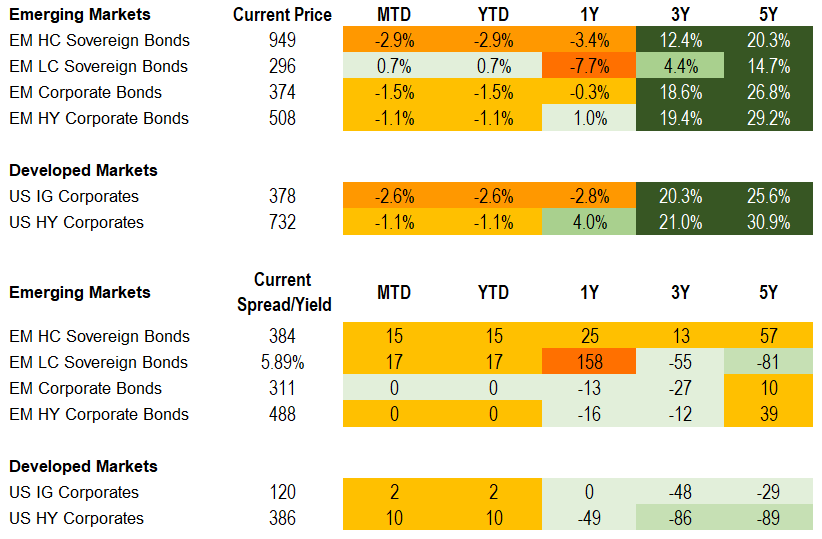
Equities
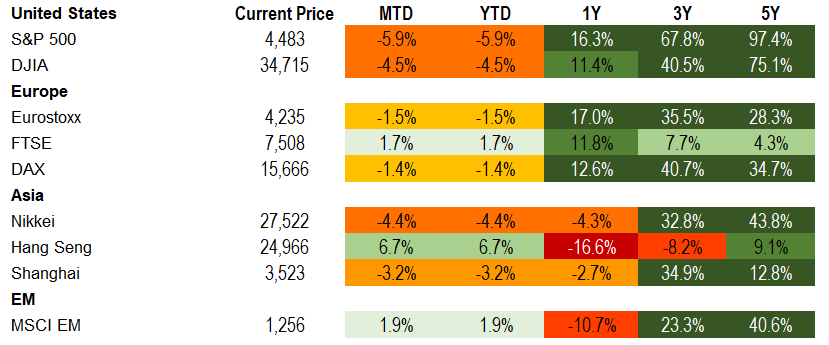
Commodities

Source for data tables: Bloomberg, JPMorgan, Gramercy. EM Fixed Income is represented by the following JPMorgan Indicies: EMBI Global, GBI-EM Global Diversified, CEMBI Broad Diversified and CEMBI Broad High Yield. DM Fixed Income is represented by the JPMorgan JULI Total Return Index and Domestic High Yield Index. Fixed Income, Equity and Commodity data is as of January 21, 2022 (mid-afternoon).
Emerging Markets Weekly Highlights
Diplomatic efforts to manage U.S.-Russia standoff over Ukraine continue
Event: U.S. Secretary of State, Antony Blinken, and Russia’s Foreign Minister, Sergey Lavrov, met in Geneva in an effort to ease tensions over potential NATO expansion into Ukraine and other post-Soviet countries.
Gramercy Commentary: Market participants appeared disappointed by the messages/tone that transpired from last week’s initial round of high-profile talks between Russia and US/NATO/OSCE, which triggered downside pressure on Russian and Ukrainian assets amid doubts that diplomatic efforts can avert potential Russian military action against Ukraine. However, diplomacy seemed to be regaining momentum this week, driving an improvement in market sentiment and culminating in a face-to-face meeting by the US and Russia’s top diplomats. Both sides agreed that the meeting “provided a clearer path forward” and agreed to discuss further meetings after the U.S. provides a written response to Russian demands next week. However, the U.S. remains firmly committed to NATO’s “open door policy”, which is at odds with Russia’s main demand for a moratorium over future NATO expansion toward its borders, specifically, offering membership to Ukraine and Georgia. Earlier during the week Secretary Blinken visited Kyiv where he assured Ukrainian president Zelensky of U.S. support. This being said, it is highly unlikely that NATO will be offering to Ukraine any tangible steps (i.e., a so-called roadmap) for joining the trans-Atlantic military union in the foreseeable future. As such, we remain of the view that space exists for a mutually acceptable compromise between the Biden Administration and the Kremlin over the European/Eurasian security architecture going forward. However, credible signals toward de-escalation would be required to ease market concerns about potential negative scenarios for Ukraine.
Ghana authorities aim to shore-up sentiment with expenditure reduction plans
Event: The Ministry of Finance released plans for up to a 20% expenditure reduction relative to the 2022 budget in the event of revenue underperformance, a key concern of investors in relation to the ability of the authorities to deliver on their ambitious fiscal consolidation plan. This followed growing market pressure amid delayed approval of a new e-levy, a sizable revenue raising measure, and a negative outlook revision from Fitch last week.
Gramercy Commentary: The efforts to boost confidence and transparency through further detail on contingency expenditure reduction plans are constructive and should provide some support to asset prices and incrementally higher confidence on the fiscal outlook for 2022. However, we think passage of the e-levy combined with actual performance in 1H22 will be necessary for more material improvement in sentiment.
Argentina’s Foreign Minister met with U.S. Secretary of State, Antony Blinken, in efforts to push forward an IMF deal
Event: Argentine Foreign Minister, Santiago Cafiero, met with U.S. Secretary of State, Antony Blinken, on Tuesday where negotiations with the IMF were a key topic. According to the State Department press release, Blinken emphasized the need for Argentina to put forward a strong economic policy framework among other broad topics including democracy and human rights in the region and the 1994 Iranian bombing in BA.
Gramercy Commentary: We continue to see the U.S. supportive for a deal but that in and of itself is insufficient absent a credible macroeconomic plan agreed domestically and with the Fund. While local political maneuvering continues, further progress will be necessary in the coming weeks in order for a deal to occur in the first quarter. The macroeconomic pressures will continue to build in this period in theory providing greater incentive to authorities to accelerate the process. The narrow window and low FX reserves suggests that arrears are possible, but we envisage ongoing negotiations in this scenario indicating that non-payment would be temporary in nature.
Emerging Markets Technicals
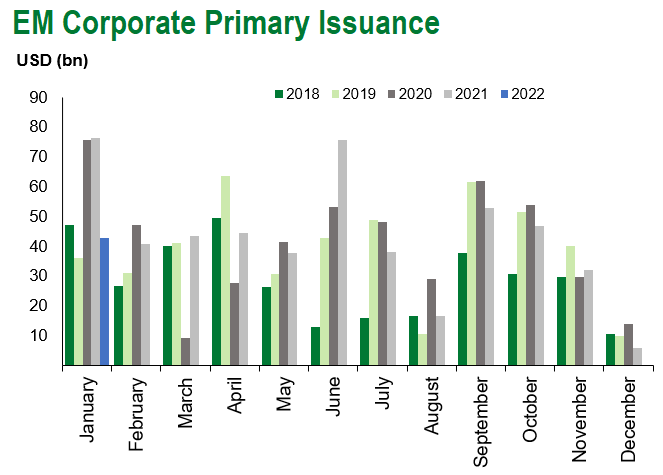
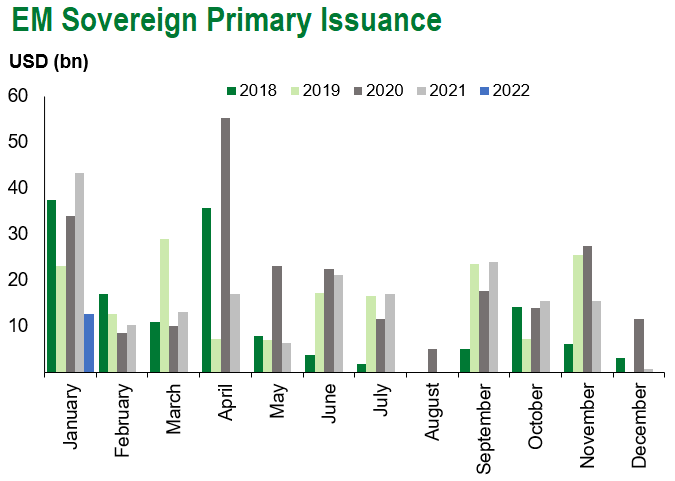
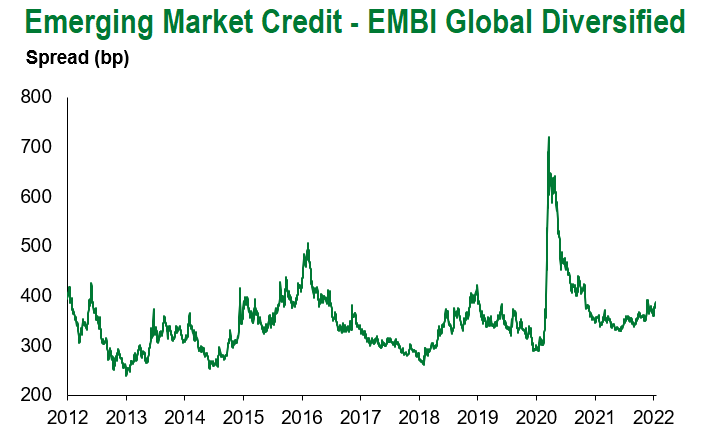
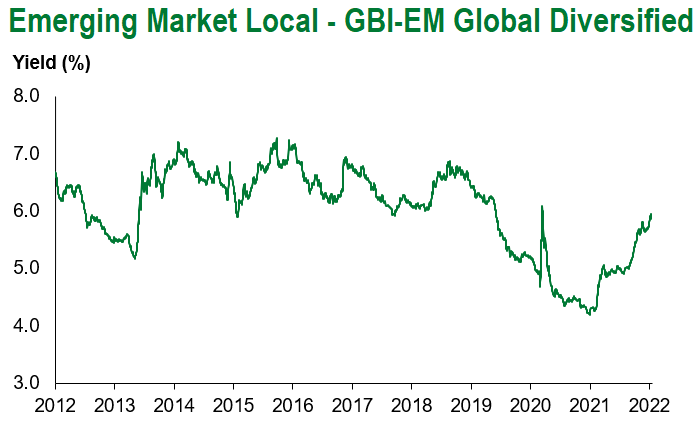
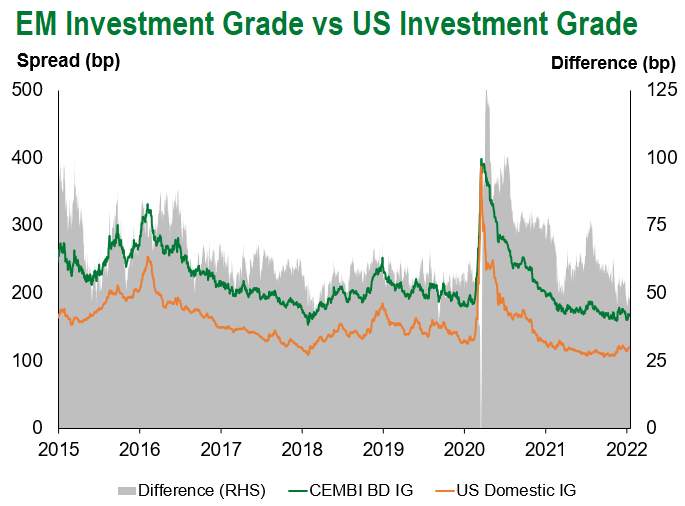
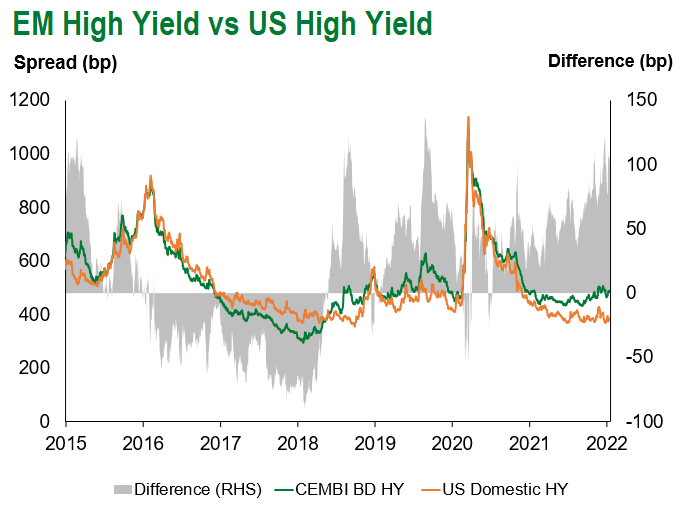
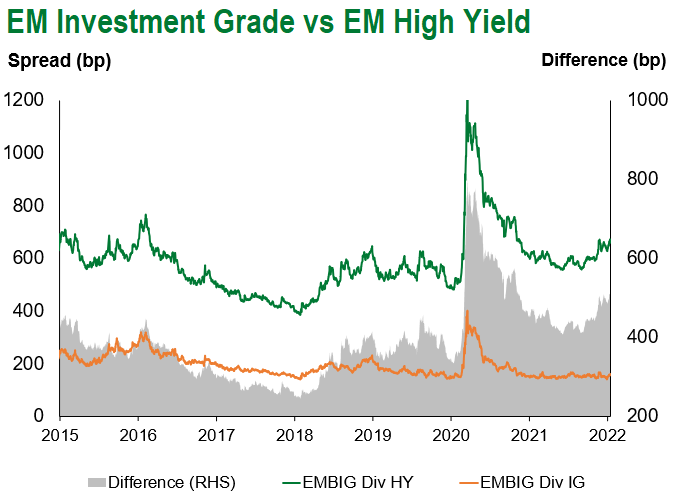
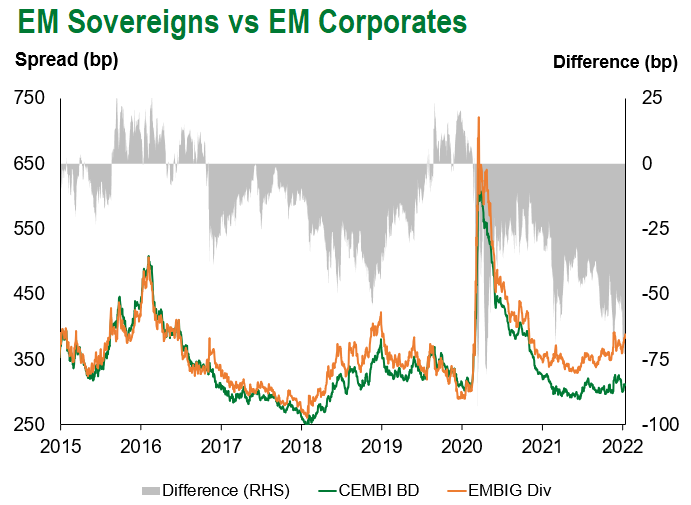
Emerging Markets Flows
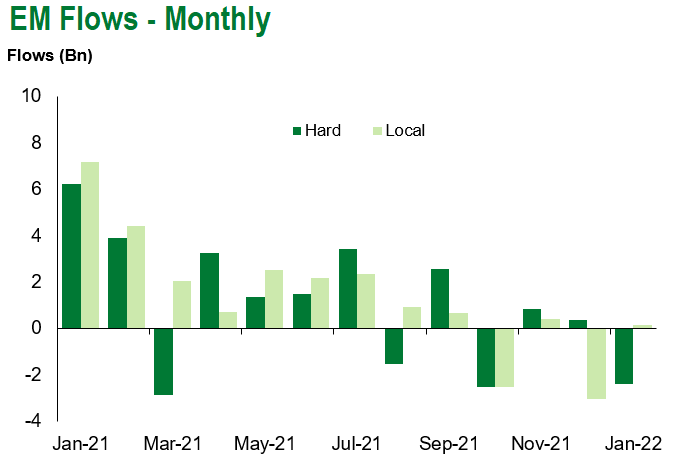
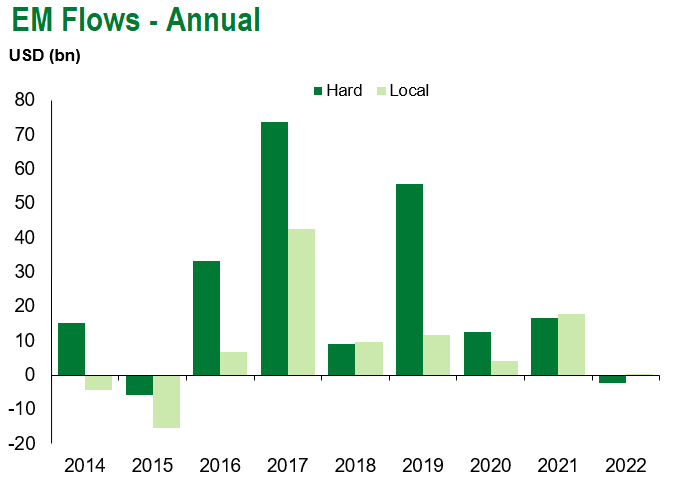
Source for graphs: Bloomberg, JPMorgan, Gramercy. As of January 21, 2022.
COVID Resources
Emerging Markets COVID-19 Case Summary
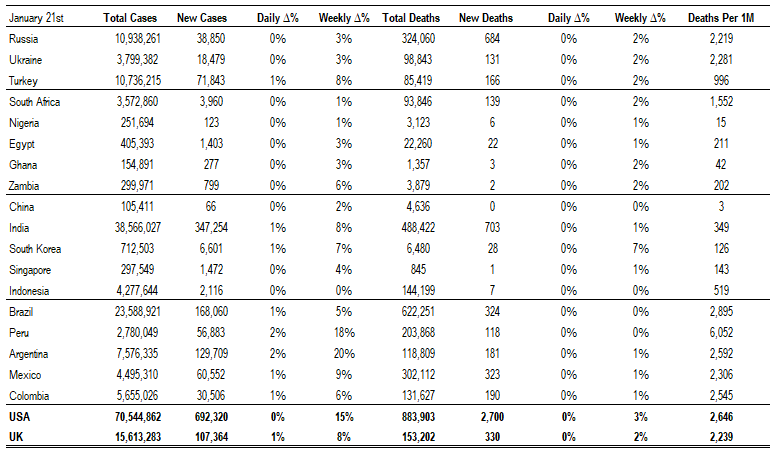
Source: Worldometer as of January 21, 2022.
Additional Crisis Resources:
Johns Hopkins COVID-19 Case Tracker
For questions, please contact:
Kathryn Exum, CFA ESG, Senior Vice President, Sovereign Research Analyst, [email protected]
Petar Atanasov, Senior Vice President, Sovereign Research Analyst, [email protected]
Tolu Alamutu, CFA, Senior Vice President, Corporate Research Analyst, [email protected]
James Barry, Vice President, Corporate Research Analyst, [email protected]
This document is for informational purposes only. The information presented is not intended to be relied upon as a forecast, research or investment advice, and is not a recommendation, offer or solicitation to buy or sell any securities or to adopt any investment strategy. Gramercy may have current investment positions in the securities or sovereigns mentioned above. The information and opinions contained in this paper are as of the date of initial publication, derived from proprietary and nonproprietary sources deemed by Gramercy to be reliable, are not necessarily all-inclusive and are not guaranteed as to accuracy. This paper may contain “forward-looking” information that is not purely historical in nature. Such information may include, among other things, projections and forecasts. There is no guarantee that any forecasts made will come to pass. Reliance upon information in this paper is at the sole discretion of the reader. You should not rely on this presentation as the basis upon which to make an investment decision. Investment involves risk. There can be no assurance that investment objectives will be achieved. Investors must be prepared to bear the risk of a total loss of their investment. These risks are often heightened for investments in emerging/developing markets or smaller capital markets. International investing involves risks, including risks related to foreign currency, limited liquidity, less government regulation, and the possibility of substantial volatility due to adverse political, economic or other developments. The information provided herein is neither tax nor legal advice. Investors should speak to their tax professional for specific information regarding their tax situation.